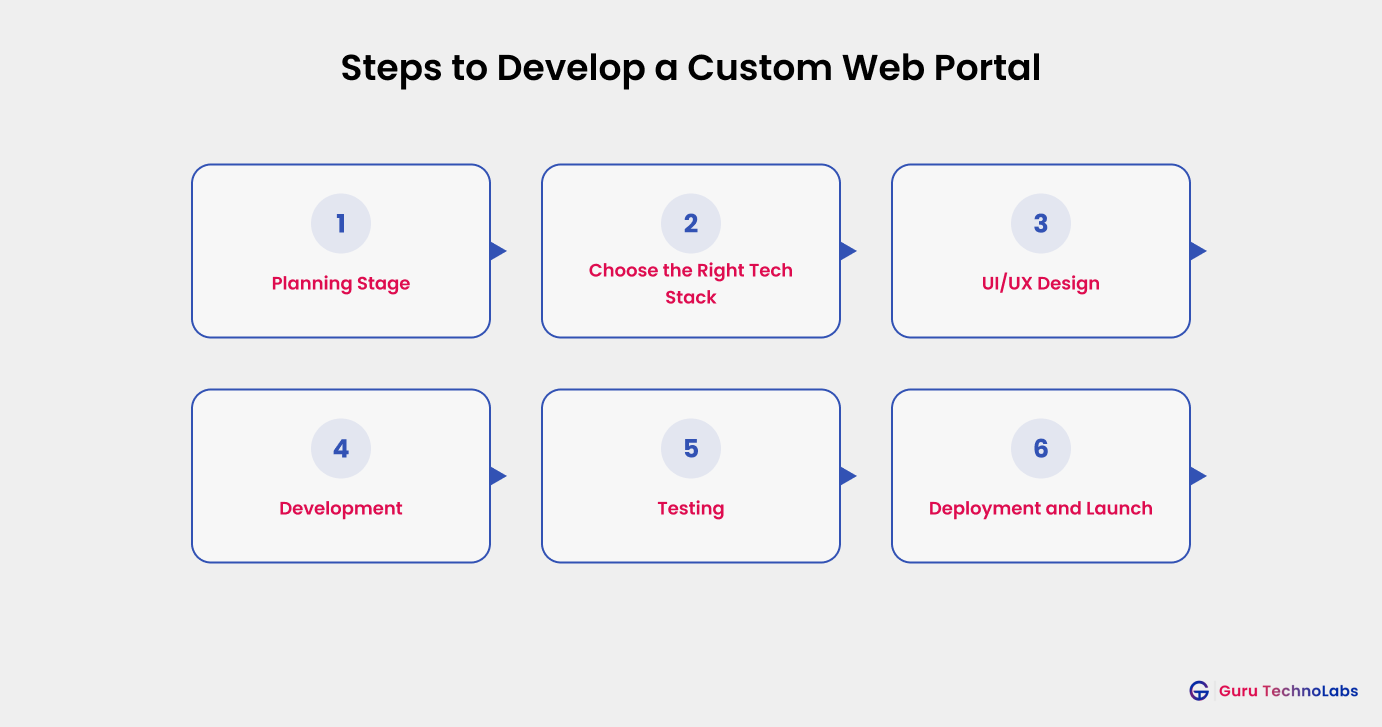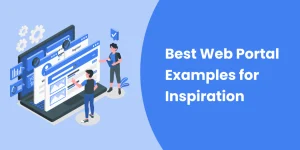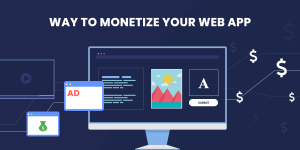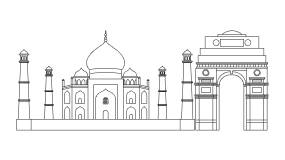Definitive Guide to Custom Web Portal Development (2025)

Imagine having a single, easily accessible hub where you can find everything you need- from managing your business tasks to communicating with clients or accessing personalized content. Think of platforms like Amazon or online baking portals, which combine various services in one place for convenience and efficiency.
In fact, according to a report by Statista, the global market for web portals is projected to grow to $25000 million by 2031, highlighting the increasing demand for customized web portals.
Whether you are building a client-facing platform or an internal tool for your team, developing a custom web portal involves understanding your users’ needs, aligning with your business goals, and incorporating cutting-edge technology. But how much does it cost, and where do you start? That’s where we come in- we specialize in crafting custom web portals that are tailored to your specific needs, and we’re here to guide you through the entire process, making it simple and cost-effective.
What is a Web Portal?
A web portal is an online platform that serves as a central point of access to a variety of information, tools, and services. Whether it’s business operations, client management or skill development, web portals enable streamlined navigation and resource access efficiently.
Here’s why web portals are essential for individual as well as business use:
- Centralized access
- User personalization
- Interactive and collaborative
- Secure communication
Popular examples of web portal are Slack (enterprise collaboration platform), MyChart (a patient healthcare portal), and Coursera (an online learning platform ).
These varied portals enable users to stay organized and access key resources in one central location, revolutionizing the way we manage data.
How Does Web Portal Work?
A web portal acts like a virtual entrance that combines diverse services, tools, and information into a single platform. This makes it easy for users to find what they want without searching through dozens of sites or platforms.
A web portal organizes everything into a user-friendly interface, whether it be an online learning platform, a business intranet, or a customer service portal. Here’s how they work:
- Login Access: Users mostly use a secure username and password to log into a web portal.
- Personalized Dashboard: With login, when users are immediately greeted with a personalized dashboard which includes relevant content, tools, or services, based on their preferences or roles.
- Navigation: Web portals enable easy navigation, generally in the form of menus or icons, allowing users to quickly locate and access varied sections (such as documents, communication tools, or services).
- Service Aggregation: The portal aggregates services ( e.g, email, chat, or document management) into a single interface, allowing users to toggle between them without having to leave the portal altogether.
- Security Features: Web portals use encryption and secure login methods, protecting sensitive information from unauthorized access, ensuring data privacy and security.
A popular example of how a web portal works is Google Workspace (formerly known as G Suite). It combines Gmail, Google Drive, Google Docs, and other tools into a single platform, allowing users to access everything they need to collaborate and work efficiently in one place.
Streamline Your Operations with Expert Custom Web Portal Development Services
Steps to Develop a Custom Web Portal
Developing a custom web portal is a journey that requires careful planning, the right technology, and a focus on user experience. Whether you are building a portal for business operations, customer service, or a specialized service like education or healthcare, each step of the development process plays a crucial role in the final product.

1. Planning Stage
The first and foremost important step of web portal development is planning. In this section, you will define vision, goal, and features of your portal.
- What problem is it solving?
- Who are the end users?
- And what are their needs?
The following foundational questions will help you create a blueprint that is as detailed and informative as possible, guiding the whole project. An effective planning phase is not a one-man show, but there are collaborative efforts with the stakeholders and the potential users to gather their needs.
The more you plan, the easier the development will be! In such a case you would probably be thinking of MVP development — developing a minimum viable product to test key features before a major rollout.
2. Choose the Right Tech Stack
Choosing the right technology stack is one of the most important decisions for the success of your custom web portal. A tech stack is a combination of these technologies (programming languages, frameworks, databases, etc) which you will be using to build your portal. That decision influences everything from the functionality of the portal to its scalability and security.
If you are designing an Enterprise portal, then you might prefer more robust and secure technologies like React for the front end , and Node. js for back-end development. If you are looking for a basic, content-focused portal, WordPress could be a perfect option.
| Tech Stack | Description | Best for |
|---|---|---|
| React + Node.js | Powerful front-end and back-end combo. Ideal for complex web portals with dynamic features. | Enterprise portals, e-commerce portals |
| Vue.js + Firebase | Lightweight front-end framework with real-time backend. | Simple business or personal portals |
| WordPress +WooCommerce | Easy to use, cost-effective, and scalable | E-commerce portals, content portals |
| Angular + MongoDB | Highly scalable solution with robust database support. | High-traffic portals with lots of data |
Hire dedicated developers who are skilled in web development will help you with this important step if you are unsure of where to start.
3. UI/UX Design
User experience matters a lot in a web portal, it is not only about functionality. Knowing that, the portal’s UI (User Interface) and UX (User Experience) design is critical to its interaction with the users.
Visitors to it will stay more engaged with the portal and will use it more often if the design is user-friendly and intuitive.
4. Development
Now that you have planned, your design finalized, the next step is actual development. The coding phase is where we write the code that makes the design and functionality a reality. Development usually starts with creating the database and back-end framework, and then extending the front-end capabilities over the Rails.
For a quicker launch, MVP development may be the solution that you are looking for. By working on the primary functionalities in your portal and the right conditions, you will be able to test it in practice and get feedback on it, before bringing the rest of the functionalities.
For good results, hire developers with experience of web development and portal making. Custom web portals usually require complicated backend logic, integration with other systems, and smooth front-end design, so the development team must have expertise.
5. Testing
Testing your portal across various devices and browsers is vital. Bugs get caught, security issues get surfaced, and performance gets optimized during this phase.
You’ll want to conduct usability testing as well so that the portal’s interface is intuitive for users. Now is the perfect time to see if the customer service portal (for instance) aligns with the expectations of actual users.
6. Deployment and Launch
The last process of developing your bespoke web portal is deployment and launch. This is when all your hard work pays off, and the portal goes live for the world to access and use. Finally, after testing and making sure everything works as expected, the portal is deployed from the development environment to a live server to allow users to access it.
A soft launch or beta testing phase is typically completed before the official launch, so you can get feedback from a smaller group of users. It allows you to make last-minute tweaks and resolve any unexpected complications before going live.
How Much Does Web Portal Development Cost?
The cost of developing a custom web portal can vary widely depending on several factors such as:
- Complexity of the portal
- Design and user interface
- Tech stack
- Integration with third-party services
- Security requirements
- Scalability
- Testing and quality assurance
- Post-launch support and maintenance
Whether you’re building a simple content portal or a complex enterprise-level platform, each component plays a role in determining the overall cost.
If you want to get an accurate estimate for your project, the best approach is to share your specific requirements with us. At Guru TechnoLabs, we will assess your needs, provide a detailed plan, and offer a customized cost breakdown. We understand that every business is unique, and we’re here to guide you through the process with a solution tailored to your goals. Contact us today, and let’s bring your web portal vision to life!
Frequently Asked Questions
Web portal development refers to the process of creating a custom online platform that integrates different services and tools into one cohesive user experience. It involves planning, design, coding, testing, and deployment, ensuring the portal is secure, functional, and user-friendly.
The purpose of a web portal is to give users a single access point to everything they need. It can provide services like communication tools, document management, data analytics, and much more.
The cost of developing a web portal can vary based on features, design complexity, and the technology used. It could range from a few thousand dollars for basic portals to tens of thousands for complex, enterprise-level portals.
The development time for a web portal depends on its complexity. A simple portal might take 2 to 3 months to develop, while a more complex portal could take 6 months or longer.
Some popular examples of web portals include:
1. Google Workspace (a suite of tools for collaboration and productivity) 2. Salesforce (a customer relationship management platform) 3. Khan Academy (an educational portal for students and teachers) 4. MyChart (a healthcare portal for managing medical records)To develop a web portal, it’s recommended to hire experienced web development professionals or a specialized development team that has experience in building custom portals. A skilled team will ensure the portal is built to meet your specific needs and is secure, scalable, and user-friendly.





















